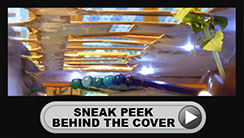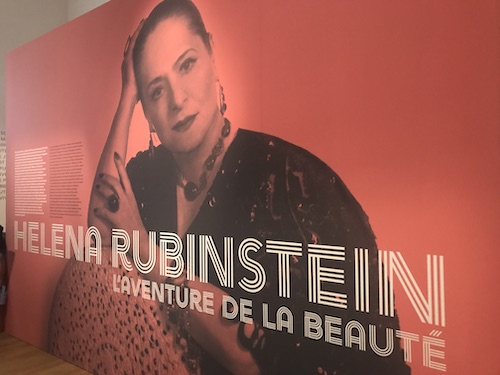
By Claire Doole, Doole Communications
Mounting an exhibition is one of the most challenging but potentially rich types of storytelling as you have the scope to appeal to the senses, of sight, hearing and sometimes touch. Curators must find a theme, and weave a red thread or "fil rouge" through the lives of their famous and talented subjects to create a story that gives deeper insight and meaning to their work.
Unfortunately, the exhibition "L'aventure de la beauté" about the life of Helena Rubenstein failed to bring alive the story of the woman who invented skincare and make-up as we know it.
As I went around the exhibition at the Museum of Art and Jewish History in Paris, I realised that there was no red thread drawing you in to a life that defied convention. It failed on several levels in the art of storytelling.
A logical structure that inspires interest
There are many ways to structure a story so that it is easy to follow:
• Geographically
• Chronologically
• Thematically
• Problem v Solution
• Challenge v Opportunity
The curators structured the story geographically: Krakow- Vienna- Melbourne- London-Paris- New York - Tel Aviv. This is fine as a concept, but the story became very disjointed and confusing as Helena travelled back and forth between many of these cities during her 93 years.
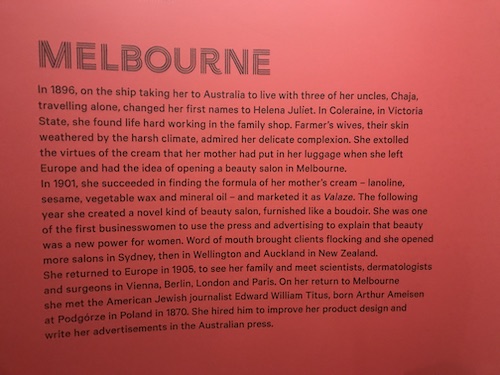
The titles by themselves do not say much. However, you could generate much more interest by simply adding a sentence such as "Melbourne - a fortune is made". It was there that Helena built her multimillion-beauty empire as a result of her business acumen in selling her mother's face cream.
Match the words and the pictures
One of the basic rules of presenting is to make sure that your slides or other audio-visual support reinforce your message and don't detract from it.
However, as you see from the text below the curators of the museum do not follow this rule. It says that Helena used to wear a white coat when visiting her factories. Unfortunately, the image next to the text is a portrait painting of Helena wearing a red dress.
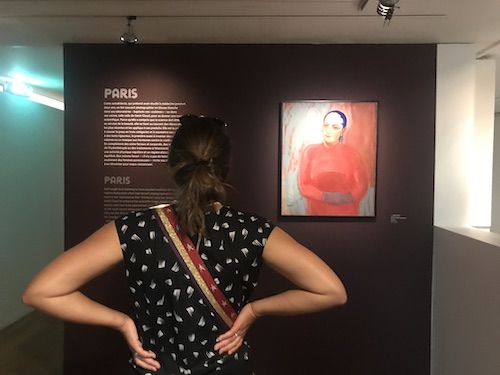
The photos of Helena in her white coat are displayed in another room further on in the exhibition. Although she didn't have a medical degree, she knew the value of pseudo-science to boost sales!
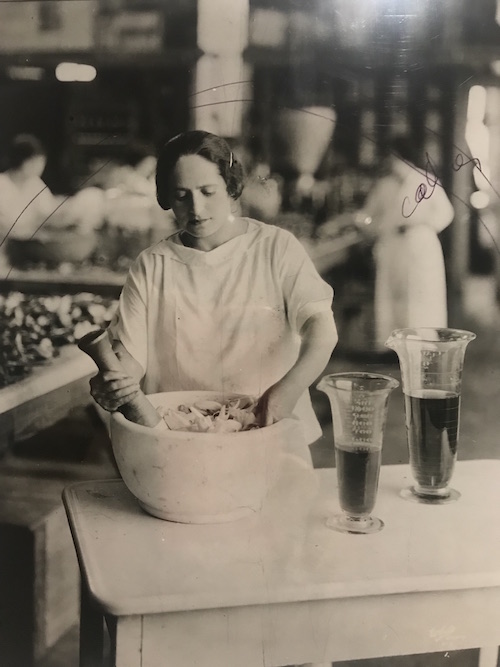
Helena was a passionate art collector - Pablo Picasso and Henri Matisse were among her favourites. The exhibition includes works by these masters as well as by Marc Chagall and Maurice Utrillo. But have a look at the accompanying text to this work by Picasso.
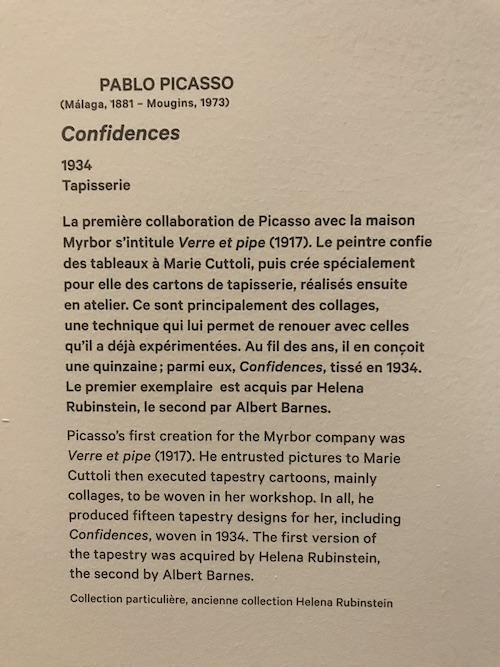
Are you confused? For me there are a number of problems with the text. Firstly, it only makes the link to Helena - the subject of the exhibition - at the end. Secondly, it starts by describing not the collage we are seeing - "Confidences" - but another Picasso - "Glass and Pipe". Thirdly, it introduces the house of Myrbor without any explanation. Fourthly, the text doesn't clearly make the link with Marie Cuttoli who commissioned Picassos first collages. And fourthly, who is Albert Barnes?
How about if we match the text to the subject of the exhibition immediately and then bring in the other points?
Helena Rubenstein bought the first edition of Pablo Picasso's collage "Confidences" - conceived by the Spanish master in 1934. Since 1917 he had been producing collage paintings for the House of Myrbor, created by Maria Cuttoli to sell collages designed by famous artists.
Add some flavour to your storytelling
The text below says that make-up was considered the preserve of tarts and actresses in the UK in the 1920's. It says that aware society was rapidly changing, she created a make-up line to sell in her beauty salons. It jumps from cause to effect without telling us how Helena overcame the challenge.
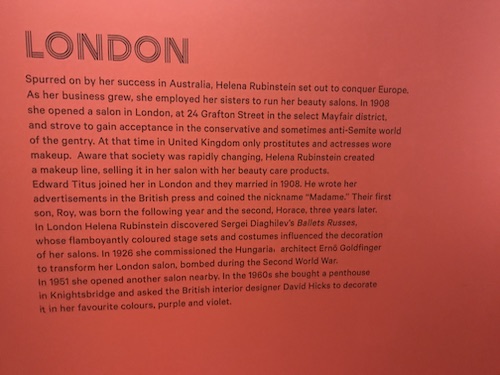
Yet in a fascinating article in the Daily Mail we learn that she persuaded her influential friends such as the wife of the Prime Minister to wear her make-up and they became trendsetters - the equivalent of today’s YouTube influencers!
If you really want to know about Helena Rubenstein, read the Daily Mail article extracted from the biography by Michele Fitoussi. It is an example of great storytelling with a clear angle - how Rubenstein's success came at a terrible emotional cost as she put her career ahead of her personal relationships.
The writer leads you seamlessly through the challenges Rubenstein faced - making you want to know more about an astute businesswoman who was ahead of her time.
In my opinion and that of a couple of friends who also saw the exhibition, the exhibition was a missed opportunity; the curators had all the ingredients but served up a dish devoid of flavour by not following the basics of storytelling.
Author's bio
 Claire is a former BBC correspondent and international spokeswoman who is passionate about helping people communicate with confidence. Since 2006, she has successfully trained hundreds of professionals in the art of presenting and public speaking, talking to the media, managing communications in a crisis, and writing for the web. In addition, she has coached C-level executives and public figures to give powerful TEDx and TED style talks in Europe and the Middle East. A Swiss and UK national, Claire trains and coaches in French and English.
Claire is a former BBC correspondent and international spokeswoman who is passionate about helping people communicate with confidence. Since 2006, she has successfully trained hundreds of professionals in the art of presenting and public speaking, talking to the media, managing communications in a crisis, and writing for the web. In addition, she has coached C-level executives and public figures to give powerful TEDx and TED style talks in Europe and the Middle East. A Swiss and UK national, Claire trains and coaches in French and English.
Claire is also a highly experienced moderator having facilitated panel discussions with government ministers, NGO activists, humanitarians and human rights specialists at major events.





